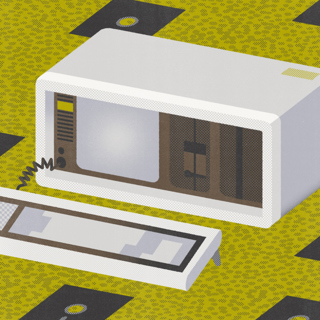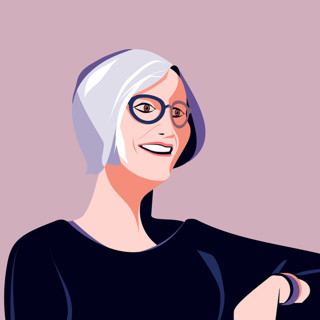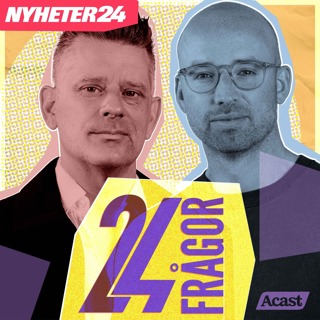
Men's Wearhouse: George Zimmer
In 1970, George Zimmer was a college graduate with no real job prospects and little direction. That's when his father, an executive at a boy's clothing company, asked him to go on an important business trip to Asia. It was that trip that propelled him into the world of men's apparel. In 1973, the first Men's Wearhouse opened in Houston with little fanfare. But by the mid-80s, George Zimmer managed to carve out a distinct niche in the market – a place where men could buy a good quality suit, at "everyday low prices," along with all the shirts, ties, socks, and shoes they need. With George as the face of the brand, Men's Wearhouse became a multi-billion dollar empire with hundreds of stores across the U.S. But then, in 2013, a bitter battle forced him to give it all up. PLUS in our postscript "How You Built That," we check back with two brothers from Guinea, West Africa who founded a company that makes Ginjan, a spicy-sweet juice from their childhood that mixes pineapple and ginger. See Privacy Policy at https://art19.com/privacy and California Privacy Notice at https://art19.com/privacy#do-not-sell-my-info.
15 Apr 20191h 3min

Chez Panisse: Alice Waters
In the 1960s, Alice Waters studied abroad in France – and discovered a culinary world far from the processed food popular in America. When she returned to California, she tried to find restaurants to recreate her experiences abroad, but she couldn't. In 1971, she opened a small restaurant in Berkeley called Chez Panisse, where she focused on serving fresh, local ingredients. Just a few years later, Chez Panisse was named one of the best restaurants in America, and became one of the hottest locations for fine dining in the Bay Area. Despite her success, Alice chose not to turn Chez Panisse into a restaurant empire. Instead, she continued to insist on cooking with food raised locally, sustainably, and ethically. Today, most chefs agree Alice Waters and Chez Panisse sparked the farm-to-table movement in the restaurant industry. PLUS in our postscript "How You Built That," how Piersten Gaines took the trauma out of salon visits for women with highly textured hair. See Privacy Policy at https://art19.com/privacy and California Privacy Notice at https://art19.com/privacy#do-not-sell-my-info.
8 Apr 201959min

Springfree Trampoline: Keith Alexander & Steve Holmes
In the late 1980s, a New Zealand engineer named Keith Alexander wanted to buy a trampoline for his kids. After his wife said trampolines were too dangerous, Keith set out to design his own — a safer trampoline, without metal springs. He tinkered with and perfected the design over the course of a decade. But he was daunted by the challenge of bringing his invention to market — and he almost gave up. At that point Steve Holmes, a Canadian businessman, bought the patent to Keith's trampoline, and took a big risk to commercialize it. Today, Springfree Trampoline generates over $50 million in annual sales and has sold over 400,000 trampolines. PLUS in our postscript, "How You Built That," how Cyndi and Chris Hileman created a candle in a planter pot that can later be used to grow wildflowers. See Privacy Policy at https://art19.com/privacy and California Privacy Notice at https://art19.com/privacy#do-not-sell-my-info.
1 Apr 20191h

Compaq Computers: Rod Canion (2019)
In 1981, engineer Rod Canion left Texas Instruments and co-founded Compaq, which created the first IBM-compatible personal computer. This opened the door to an entire industry of PCs that could run the same software. PLUS for our postscript "How You Built That," we check back in with Danica Lause, who turned a knitting hobby into Peekaboos Ponytail Hats: knit caps with strategically placed holes for a ponytail or bun. (Original broadcast date: May 22, 2017). See Privacy Policy at https://art19.com/privacy and California Privacy Notice at https://art19.com/privacy#do-not-sell-my-info.
25 Mars 201939min

Away: Jen Rubio
In early 2015, Jen Rubio was racing through an airport to catch a flight when her suitcase broke, leaving a trail of clothing behind her. She tried to replace it with a stylish, durable, affordable suitcase — but she couldn't find one. So she decided to create her own. In less than a year, Jen and her co-founder Steph Korey raised $2.5 million to build their dream travel brand: a line of sleek, direct-to-consumer suitcases simply called Away. Jen's hunch that the brand would emotionally resonate with young, jet-setting customers paid off. Today, Away has become a cult luggage brand that has sold more than one million suitcases. PLUS in our postscript "How You Built That," how Jon Maroney made sledding easier for adults and more dynamic for kids with a pair of sleds that strap to your legs. See Privacy Policy at https://art19.com/privacy and California Privacy Notice at https://art19.com/privacy#do-not-sell-my-info.
18 Mars 20191h 7min

Logic: Logic & Chris Zarou
In 2010, Logic the rapper, born as Sir Robert Bryson Hall II, released his first official mixtape titled "Young, Broke & Infamous." At 20 years old, Logic certainly was young and broke, and while crashing on a friend's couch, he poured himself into his music. Logic's career could have fizzled if it wasn't for Chris Zarou, a young college athlete-turned-manager who had no more experience in the music business than Logic. Undeterred, the two decided to work together, continuing to use free music and social media to build Logic's reputation as a talented, fast-flowing rapper with a hopeful message. In 2012, Logic signed to Def Jam Records and in 2014 dropped his debut album "Under Pressure," which shot to number 4 on the Billboard charts. His third album in 2017 went platinum and included the breakout single "1 800 273 8255." PLUS in our postscript "How You Built That," we check back in with Cassy Burnvoth who built a skincare company using an unlikely ingredient – beef tallow. See Privacy Policy at https://art19.com/privacy and California Privacy Notice at https://art19.com/privacy#do-not-sell-my-info.
11 Mars 20191h 11min

Squarespace: Anthony Casalena
Like many classic technology stories, Squarespace started in a college dorm room. In 2003, 21-year-old Anthony Casalena created a website-building tool for himself. But after hearing some positive feedback from friends, he decided to put the tool online and start a business. For years, Anthony ran Squarespace almost entirely on his own but the stress took a toll and he reached the limits of what he could accomplish by himself. The journey to hiring a staff and scaling the company had its own set of growing pains for Anthony, including difficulty letting go of control, and learning how to manage other people. Today, Squarespace has grown to more than 800 employees, and valued at $1.7 billion. PLUS in our postscript "How You Built That," how Kate Westervelt took an overwhelming experience and turned it into a gift box for new moms – filled with essential items women need to recover from childbirth. See Privacy Policy at https://art19.com/privacy and California Privacy Notice at https://art19.com/privacy#do-not-sell-my-info.
4 Mars 201953min

Eileen Fisher: Eileen Fisher (2017)
In 1983, Eileen Fisher signed up for a fashion trade show with no experience, no garments, no patterns or sketches – nothing but a few ideas for a women's clothing line focused on simplicity. Within three weeks, she came up with 12 pieces, a logo, and a name: Eileen Fisher. Today, the Eileen Fisher brand is still known for its elegant and minimalist designs, but it has grown to more than 60 locations and makes over $300 million in annual revenue. PLUS in our postscript "How You Built That," we check back with Glenn Auerbach who invented nICE mug, a container made entirely from ice that keeps drinks cold. See Privacy Policy at https://art19.com/privacy and California Privacy Notice at https://art19.com/privacy#do-not-sell-my-info.
25 Feb 201945min






















